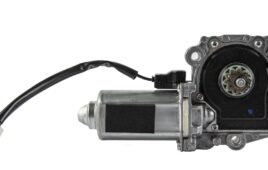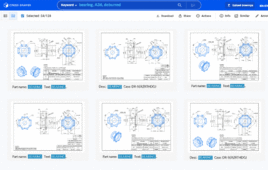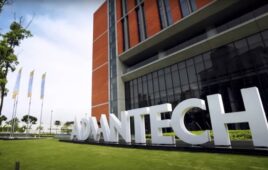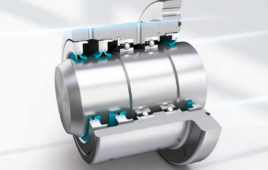(Rochester Hills, MI) Bosch Rexroth has announced that it is working with the City of Los Angeles Department of Public Works, Bureau of Sanitation, to study the benefits of hydraulic hybrid technology in their refuse truck fleet.
The project involves Bosch Rexroth’s proprietary Hydrostatic Regenerative Brake (HRB) system, which captures a vehicle’s braking energy and converts it to energy for propulsion.
As a first step, two American LaFrance, LLC Condor liquid natural gas (LNG) trucks in the city’s fleet will be outfitted with vehicle data acquisition systems to monitor real-world operating conditions.
New West Technologies, LLC is analyzing the data and providing Bosch Rexroth with the truck duty cycle data for the refuse fleet. Most important are vehicle speed profiles, engine operating maps and operating characteristics which can help determine the appropriate sizing for the hydraulic components along with a control strategy to capture the maximum amount of regenerative braking energy to reuse later for vehicle propulsion.
“As a first step, we’re working closely with the city to determine their operating routes, examine their truck duty cycles, and determine what benefits can be expected from the HRB system,” said Michelle DuHadway, Business Development Account Manager for Bosch Rexroth. “Once we have the calculation results we will decide on next steps for implementing the HRB setup.”
Hydraulic hybrid powertrains in vehicle fleets such as refuse haulers have a high potential for successfully using this technology to reduce fuel consumption and emissions, along with reduced operating and maintenance costs and improved performance.
The Rexroth HRB system uses a hydraulic pump/motor, connected to the driveline, to capture kinetic energy during vehicle braking. This energy would otherwise be lost as heat in the vehicle’s friction brakes. When braking, the pump/motor acts as a pump, absorbing energy from the driveline and imparting a retarding force on the drive wheels. The absorbed energy is used to pump hydraulic fluid into an accumulator that contains inert gas which is compressed by the incoming fluid. During acceleration the pressurized gas pushes fluid out of the accumulator and the pump/motor now acts as a hydraulic motor, assisting the engine and reducing the fuel required to launch the vehicle. The overall process is called regenerative braking.
:: Design World ::
Filed Under: Hydraulic equipment + components, Automotive, Off highway • construction • agriculture





Tell Us What You Think!